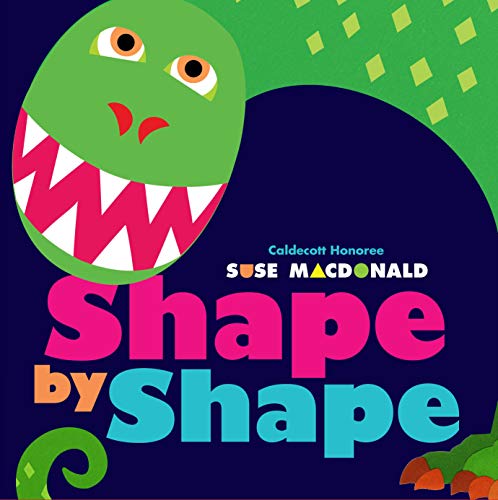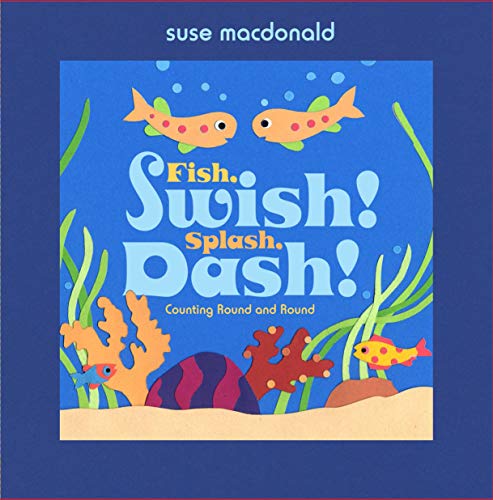Suse MacDonald
I can't remember when I first knew I was an artist, because it was something that happened gradually.
I grew up in Glencoe, Illinois. My father was a professor at Northwestern University. My mother was a writer. We spent summers on an old farm in Weston, Vermont. My first art teacher was Churchill Ettinger, a Vermont artist who showed me how to visually transfer and translate the world before me to my paper. I can't remember how long I studied with him but by the time I entered college, I knew that art would be a focus in my life.
Since both of the colleges I attended were liberal arts schools, the courses offered were in the fine arts. No one talked about commercial art. It was considered a waste of one's talents.
I didn't think much about all that then. I just took courses: life drawing, painting, printmaking, ceramics. I even made sculptures out of car parts. Nothing I tried felt quite right. I knew I was an artist but where did I fit?
After college, I married, and my husband Stuart and I settled in New York City. I decided to find a job using my artistic talents. After a number of interviews, I contacted Charles Halgren at Caru Studios and discovered that he hired artists to illustrate textbooks from time to time. That sounded like the perfect job for me, so I called him every two weeks for the next nine months. Finally, a new biology book came in and I was employed to do pen and ink illustrations for it.
I stayed at Caru for Five years. It was a wonderful time. The studio employed thirty artists, photographers, draftsmen, and even typesetters (This was before computers, and type was set by hand.). I learned all about the commercial side of art and discovered what a fascinating world it was.
Then my husband and I moved back to the family farm in Weston, Vermont, and took over a construction company. Our move came at a time when I was beginning to feel a lack of growth in my work. I'd done illustrations for all kinds of science texts and was uncertain what to do next. So I was enthusiastic about our move and our new business. I did some office work and architectural design work and drafting, and we raised two children.
However, as time went on, I needed new challenges. Somehow I was off the track. When my second child entered first grade, the time had come to quit my job and return to school. At first I thought I would become an architect. I was good at architectural design and as an architect I could continue to contribute to our business.
I looked around, found the Boston Architectural Center and went down for an interview. While I was visiting a class on that first evening, I realized very suddenly (it was like being hit by lightning) that it was not architecture that I wanted to study, it was illustration. So my search continued, but now I was looking at art schools.
I enrolled in two schools, the New England School of Art and Design and the Art Institute. By taking classes at both, I was able to organize three days of classes each week.
After I began my studies my focus shifted. I no longer wanted to draw things just as they were, I wanted to look at them in new ways: to abstract them. Bill Oakes, one of my teachers, gave me lots of encouragement in this new direction. He wanted his students to question and get away from thinking in preconceived ways. As I studied with him my work began to change.
I also enrolled in Marion Parry's class in children's book writing and illustration at Radcliffe. It was in that seminar that I really became involved in children's books and decided that was where I wanted to concentrate my energies.
After I completed my studies in Boston, I took my portfolio with a variety of picture and story ideas to New York for appointments with editors and art directors at publishing houses. I had a total of forty-seven interviews over a three year period. I kept offering different ideas and suggestions for books. None was taken. But the situation changed with Alphabatics.
I showed the illustrations for just three letters, A, B, and E, to Bradbury Press, a Macmillan imprint. The idea was accepted, and my career as a children's book illustrator began.
Alphabatics is an idea that came to me while taking topography in art school. In the course, I worked exclusively with letter forms, shrinking and expanding them and manipulating their shapes in various ways. I was intrigued by the process and felt there were possibilities for a book. However, it was several years before I worked out the idea.
Publishing Alphabatics, my first, was very exciting. The book was well received and won two prestigious awards: a Caldecott Honor presented by the American Library Association and The Golden Kite Award presented by the Society of Children's Book Writers.
Since Alphabatics I have written and illustrated many books for children, including, most recently, Fish Swish, Spalsh Dash!, a counting book; Shape by Shape and Alphabet Animals for Simon and Schuster's Little Simon imprint. Alphabet Animals won the NAPPA gold medal in 2008, and received first prize in the novelty division at the 2009 New York Book Show.
A great pleasure for me is encouraging readers to go beyond their usual stopping points and make their own artistic discoveries. "Children are inventors, They thrive on situations that bring out that quality of inventiveness." In books like Alphabet Animals, I create opportunities for imagination and originality.
Popular items by Suse MacDonald
View all offers-
I Love You: A Rebus Poem
Jean Marzollo; Suse Macdonald
Item prices starting from
View 44 offersUS$ 3.85
-
-
-
-
-
-
-
Fish, Swish! Splash, Dash!: Counting Round and Round
MacDonald, Suse
Item prices starting from
View 24 offersUS$ 3.50
You've viewed 8 of 23 titles







